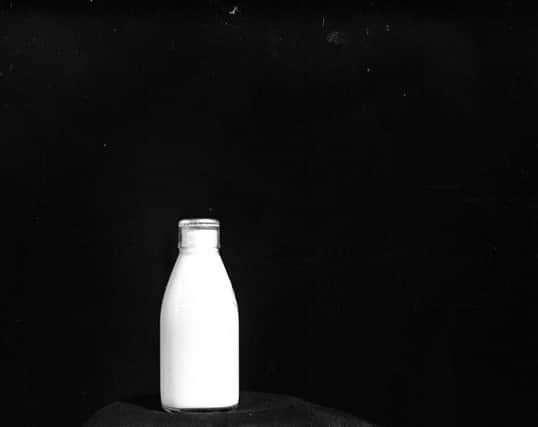Jane Bradley: cut-price milk battle goes sour


Mr Johnson was way off the mark, estimating the cost of a single pint to be “around 80p” – almost double that of the typical supermarket price at the time.
But this week, he could hardly avoid knowing the cost – at least of a giant four-pinta.
Advertisement
Hide AdAdvertisement
Hide AdThe supermarkets have gone head-to-head over milk prices – a more liquid and less bloody version of Glasgow’s ice-cream wars.
From a stand-out sign in the drive in to my local Tesco, advertising the price cut, to newspaper headlines, the cost-cutting has been a work of PR triumph.
Tesco and Sainsbury’s have both this week slashed the price of a four-pint container of the white stuff to just £1, while the Co-operative Group has cut a single pint by 5p to 45p and a two-pint by 4p to 85p. Morrison’s inflamed the bitter battle further yesterday when it said it would cut the cost of two litres of milk from 97p to 84p – the equivalent of just 24p a pint.
Asda has, in a more low-key way, been selling a four-pint carton for £1 for some time, while Waitrose has also dropped its price to £1 – but only for its MyWaitrose card holders: people who save £2 on their flat white by filling up on caffeine at the free Waitrose coffee machine and then drop £200 on their weekly shop.
Obviously the price cuts are good news for shoppers – and especially for families with young children like my own who invariably get through more milk in the average day than they do tap water.
However, others are not quite so keen. The Co-operative’s head of retail, Steve Murrells, said that he believed people will “drink three pints and throw away the other pint”.
Of course, he wanted to explain why his four-pint containers are selling for a higher price than those of his rivals – not forgetting the group did offer a milk-for-£1 deal at some of its stores for a limited period as a loss leader to draw in customers in the slow New Year retail period. I wonder if Mr Murrells felt bad about all that sour milk swishing down the plughole in January?
However, the milk is not the only thing which could turn sour. Although at the moment supermarkets are using cheap milk as loss leaders – absorbing the cheaper price to draw people into their stores – farmers are likely to see it as yet another threat to farm-gate prices. The issue sparked major protests at some milk processing plants two years ago.
Advertisement
Hide AdAdvertisement
Hide AdThe cows are equally likely to be ticked off. Daisy and her friends have worked hard to produce that extra milk just to see it being callously chucked down the drain. Any lactating mother would sympathise.
Food waste figures make seriously uncomfortable reading. We already throw away the equivalent of 5.9 million glasses of milk every day in the UK, according to recent stats from the government’s waste advisory body, the Waste & Resources Action Programme (Wrap).
If shoppers are regularly snapping up four-pint bottles of milk for just £1 – not so long ago, not far off the price of two pints – and failing to use it up on their Rice Krispies within a few days, that figure could soon rocket as gallons of rancid liquid get poured down the drain.
Research from Wrap has found people waste less if smaller packs are available. But there is little incentive to buy smaller packs if quadruple the amount is available at just over twice the price of a pint.
“But I might drink more milk this week,” the savvy shopper in you will argue, perched on your shoulder as you wander the aisles of your local supermarket. “I’ll make sure we have hot chocolate every night before bed. Horlicks, too. I’ll make pancakes and rice pudding till they come out of my ears!” But you know you won’t.
The era of Buy One Get One Free and its pals has gone on for long enough. Supermarkets need to take responsibility for food waste as well as profits. If they can afford to make milk cheaper, they should cut prices across the board – not do it in a way which encourages people to purchase food they do not need.